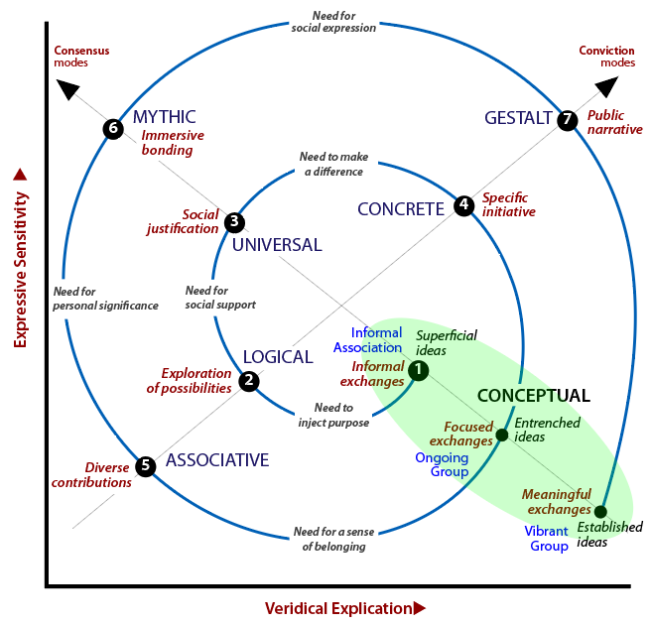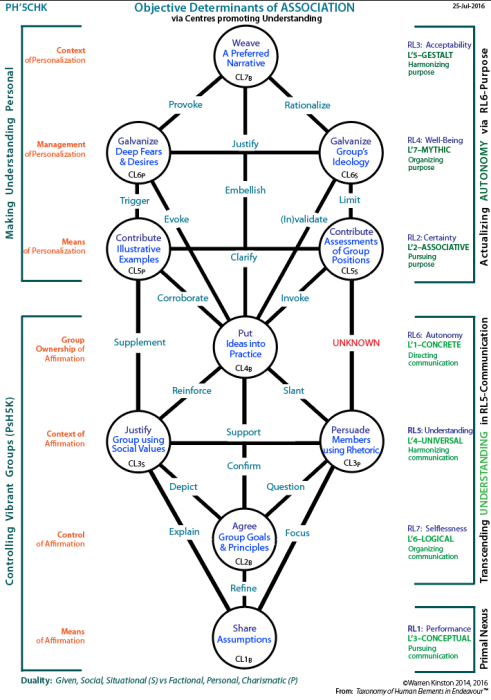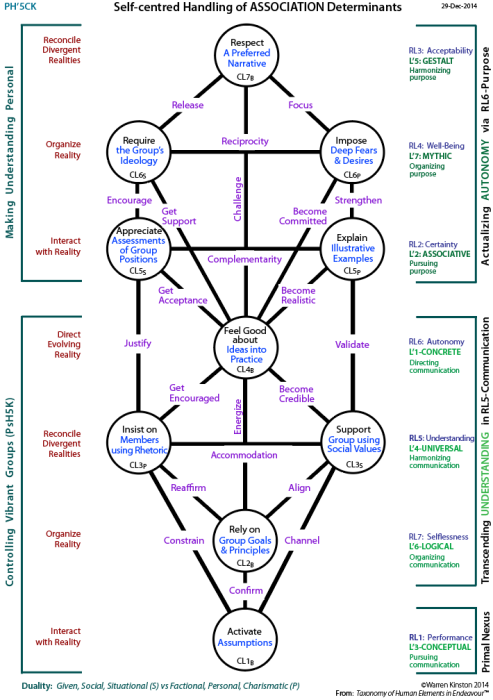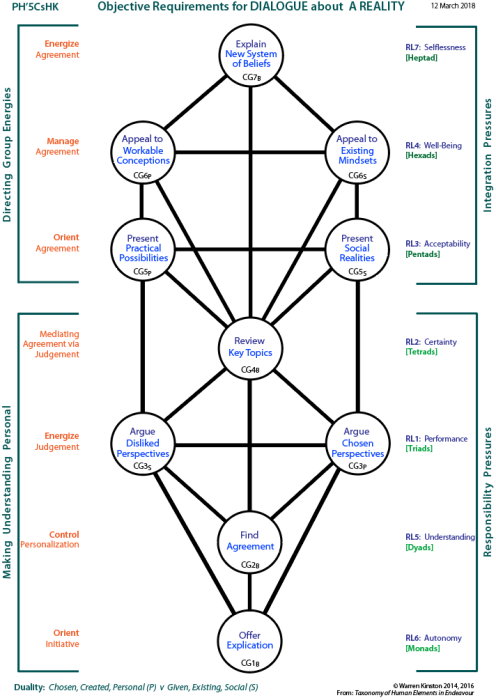Communication Controls

Overview
Use of Language Methods (PH'5)
These are posted in detail in the Using Language Satellite.
Strengthening a Shared Reality (PH'5C)
The can be viewed as that are naturally used to create any whose members strongly value each other.
Most people are only fully comfortable in applying one or two . However, everyone regards certain assumptions and values intrinsic to each method as relevant and potentially necessary to ensure understanding and enable association (i.e. the primal need). These characteristic sets of interlinked assumptions and values constitute the modes.
So modes enable a shared reality (i.e. the primal means) to be developed in a way that is likely to provide the common understanding needed for association, with each mode making its own distinctive contribution: details in table below.
Each mode is built around:
a) promoting understanding by:
- the essence for association in that mode;
- the benefit provided by the effort to associate;
- the means whereby association is ensured.
b) handling valued others by:
- exercising autonomy;
- enabling participation; activation of interest in public settings
- obtaining self-affirmation: responding to dissent
c) channelling personal functioning:
- to get a hearing

Associating is about that sustains a group in furthering common interests in the face of differences of view. So reality-sharing necessarily commences in μ1/L’3) that generate enough understanding to allow rapid and easy relating.

To sustain and strengthen sharing of a reality, modes must be activated in a series of Stages. Values of each mode cumulate progressively, so Stages reflect an increasingly sophisticated associative ethos. Group members can stop the strengthening process at any Stage if there is sufficient agreement about reality amongst group members to sustain continuing association.
In the TET diagram, the unavoidable and natural order for development shows up as a typical Spiral trajectory.
The initial allows for informal exchanges of superficial ideas about a reality that might be shared. Cycle-1 develops in accord with the wish or need to develop an ongoing group on that basis: initially by exploration, then by appeal to taken-for-granted values, and finally by a specific initiative.
Cycle-2 addresses the need to increase personal commitment to the group and its reality: initially by allowing simplified diverse contributions (), then by immersive bonding () and finally by identification with the group and its culture ().
Drivers for progression from one mode/Stage to the next include:
- need for greater grasp/acceptance by group members
- aspirations for group continuance and cohesion
- disruptive external contestation of conceptions
- limitations or excesses of the current Stage.
Determinants of Association (PH'5CHK)
An account of this Tree is not yet posted, but an analysis with a focus on the relevant psychosocial pressures is provided here in the Root Hierarchy Projection section.
Preliminary speculations are provided below.
Better viewing: Use browser zoom if needed.

|

|
Enabling Understanding (PH'5CsH)
A preliminary analysis is provided in the diagrams below.


Contesting Conceptions (PH'5CsHK)
An account of these Trees has not been provided. Initial speculations are provided below.
Additional details related to subsequent theoretical developments are provided within the Framework Naming section of the Architecture Room.
Better viewing: Use browser zoom if needed.

|

|
Originally posted: 1-Feb-2023.